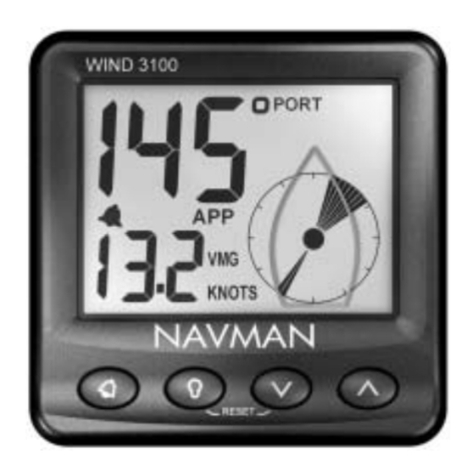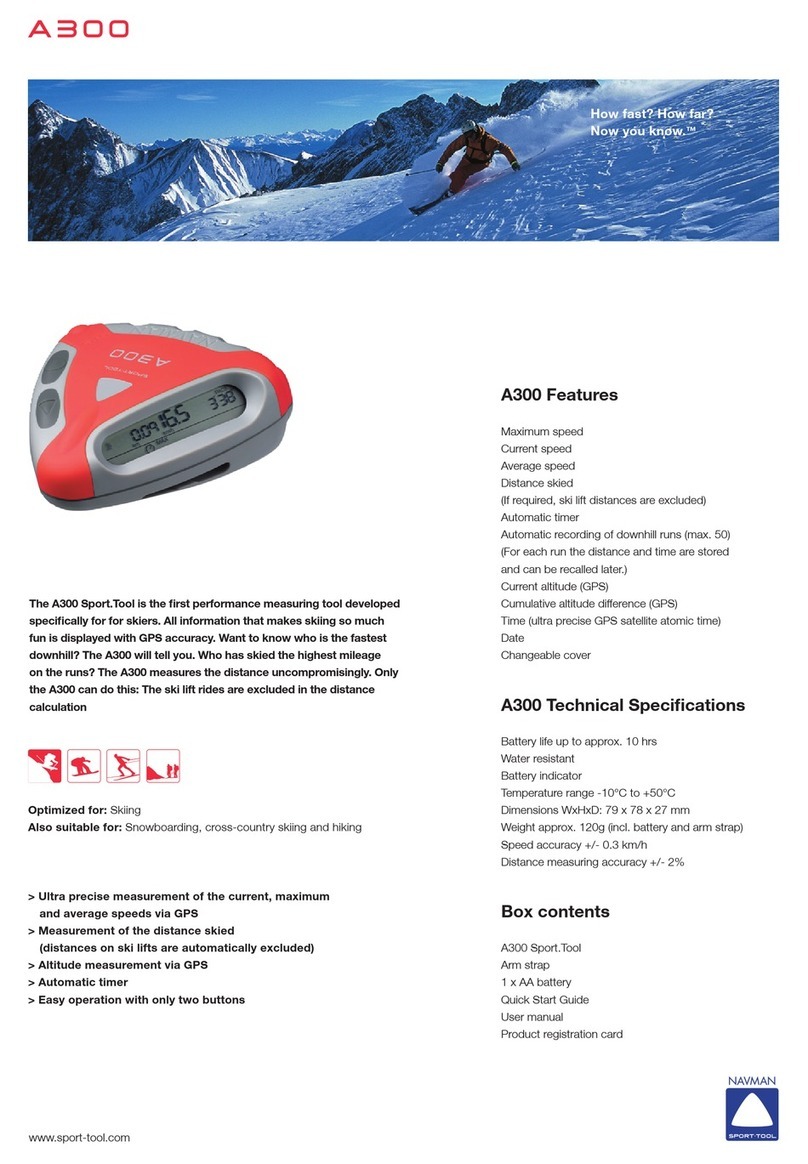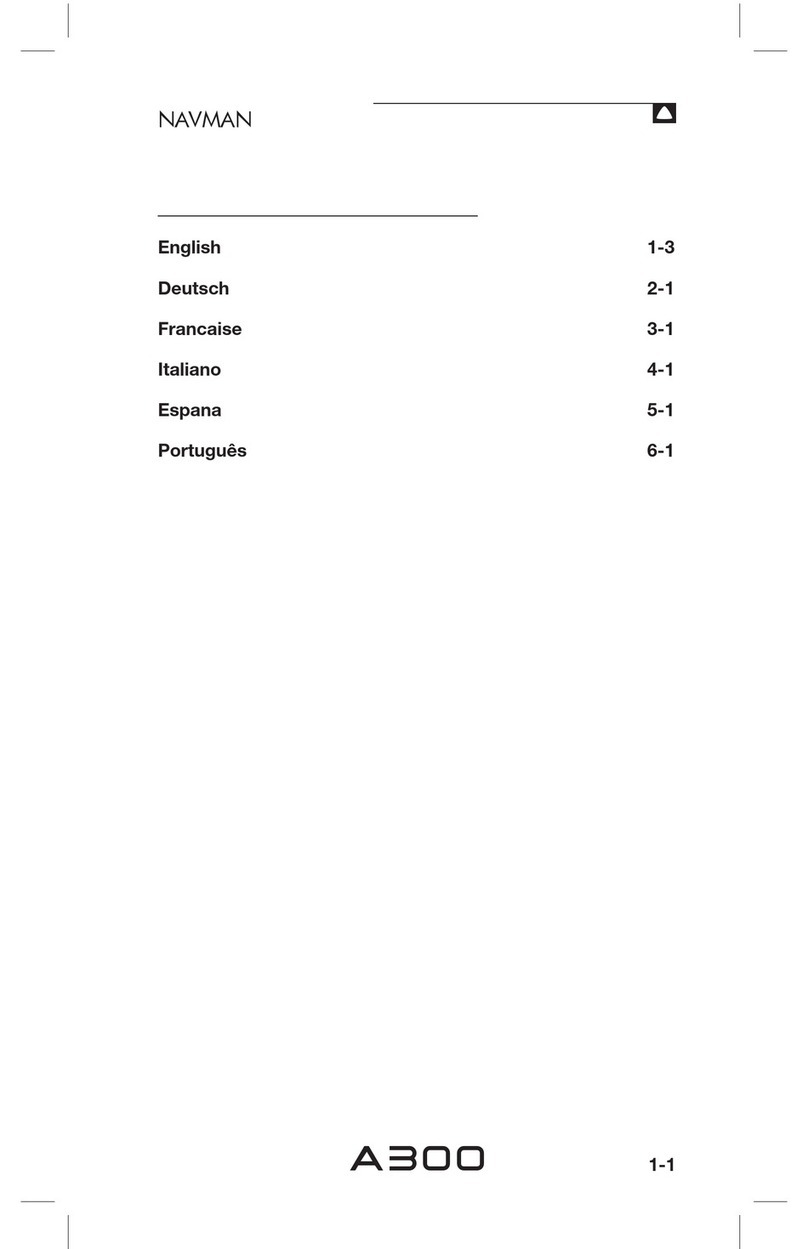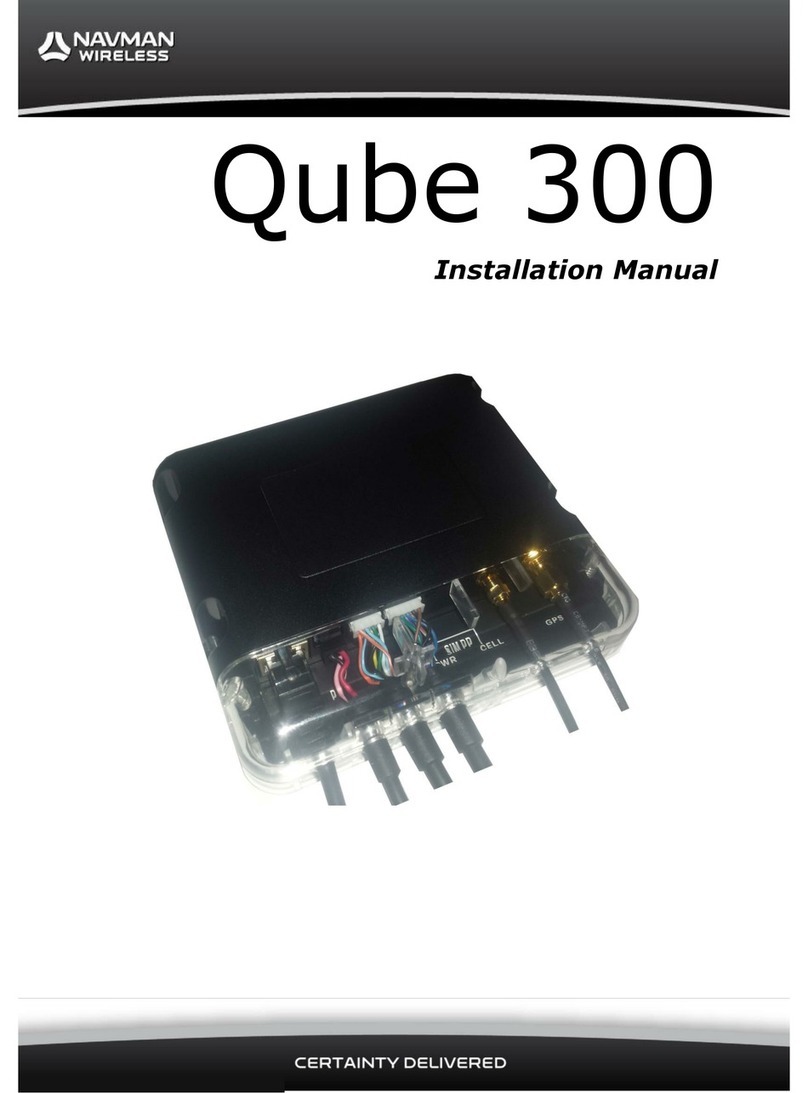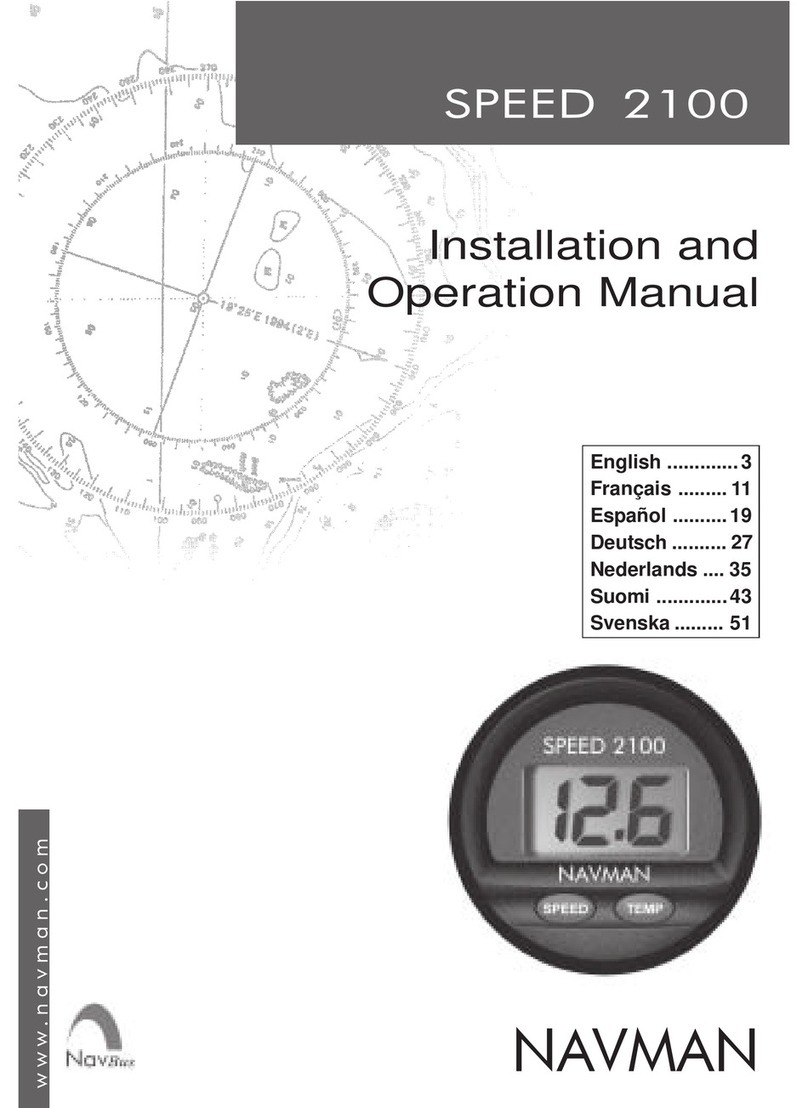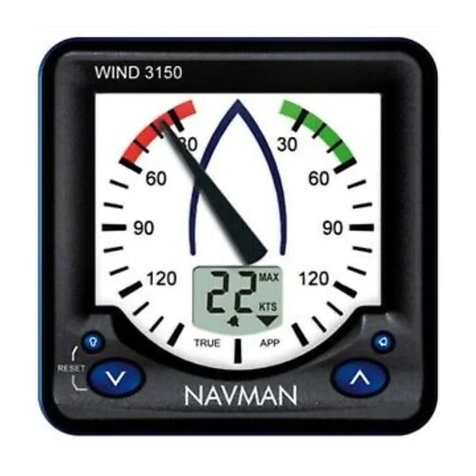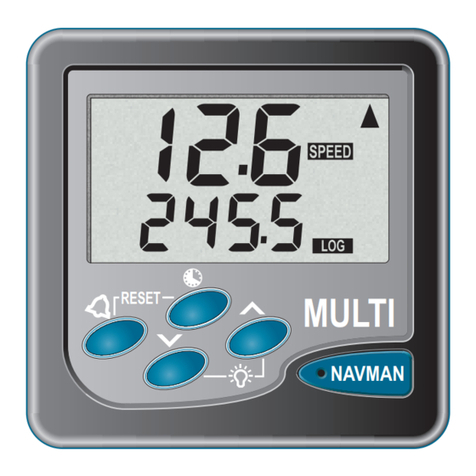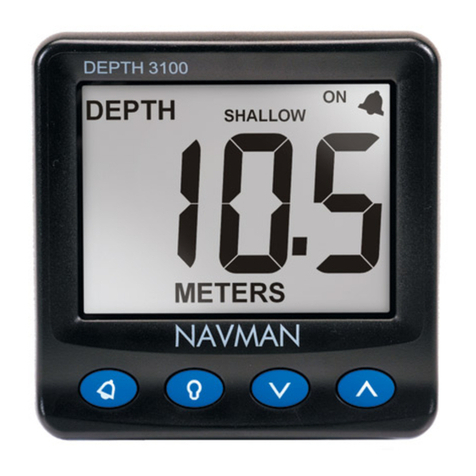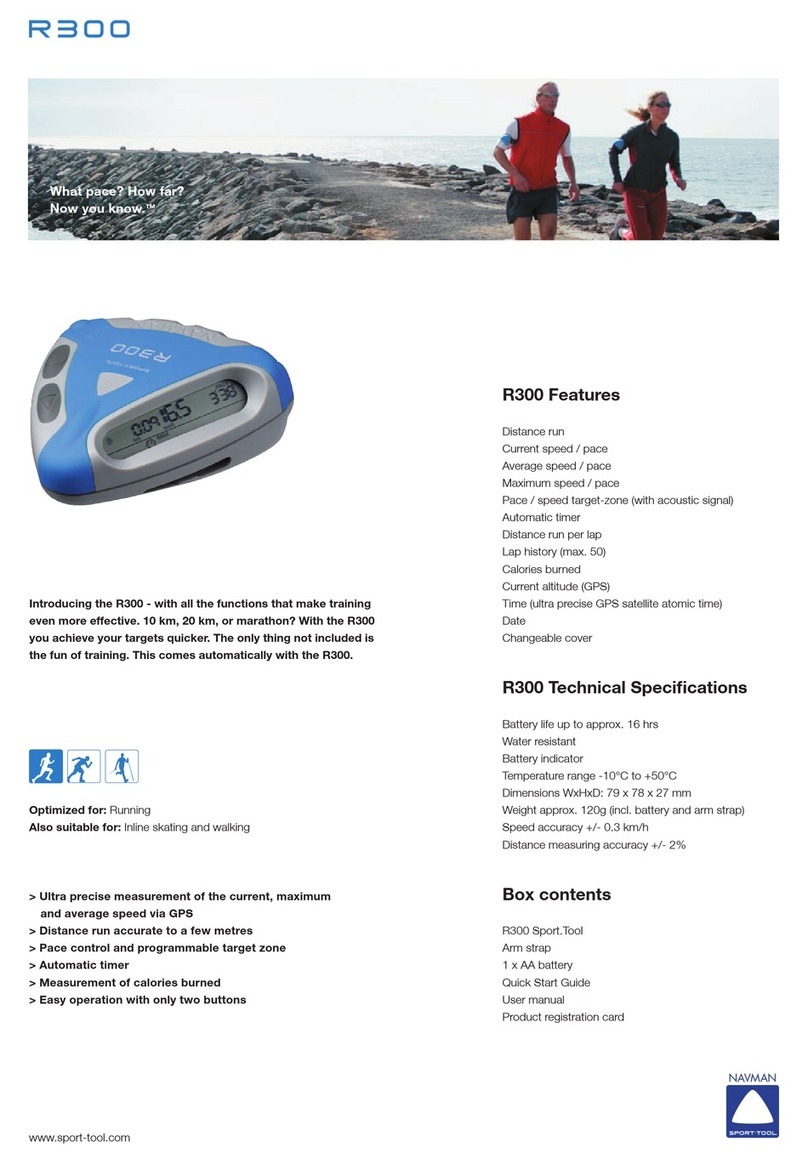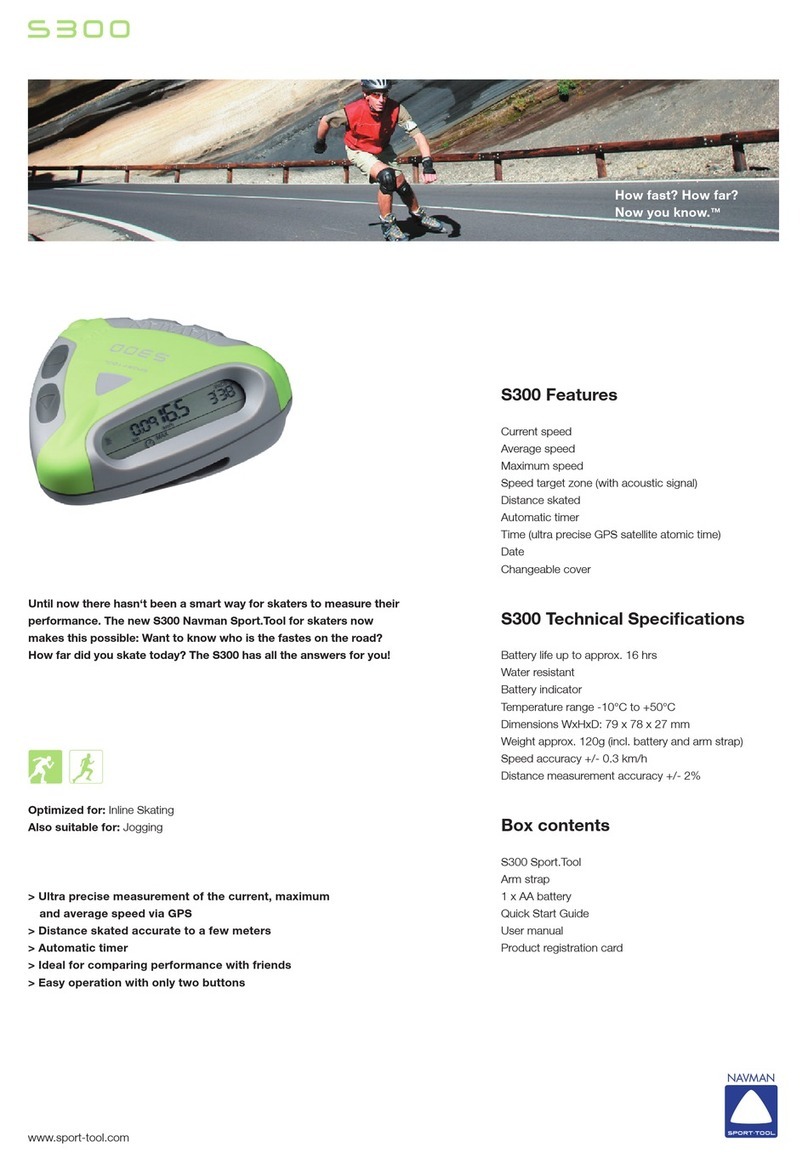8NAVMAN MULTI 3100 Installation and Operation Manual
3 Speed, average speed, maximum speed, trim speed
The unit can display several speeds:
SPEED: The current boat speed.
AVG SPEED: The average speed since AVG
SPEED was reset or the unit was switched on.
MAX SPEED: The maximum speed since MAX
SPEED was reset or the unit was switched on.
TRIM SPEED: Trim speed may be used for
tuning racing boats. Trim speed measures
changes in boat speed, relative to when you
reset trim speed to zero. For example, if the
boat is travelling at 10 knots and you reset trim
speed, then trim speed is zero. Then:
If the boat speed increases to 11.5 knots,
the trim speed is 1.5 knots.
If the boat speed decreases to 8.5 knots,
the trim speed is -1.5 knots.
3-1 Set speed and log units
Thespeedunitscanbeselected tobeKNOTS, KPH
and MPH. Selecting one of these automatically sets
the log distance units to NM, KM or M (miles):
Press until SPEED is displayed, then hold
until the units change; if necessary, hold
again until the units change again.
3-2 Reset average speed
Resetting makes the MULTI 3100 calculate a new
averagespeed:
1 Press until AVG SPEED is displayed.
2 Press + .
3-3 Reset maximum speed
Resetting makes the MULTI 3100 calculate a new
maximum:
1 Press until MAX SPEED is displayed.
2 Press + .
3-4 Reset trim speed
Resetting sets the trim speed to zero:
1 Press until TRIM SPEED is displayed.
2 Press + .
3-5 Set speed damping
Waves and wind cause the boat speed to fluctuate
slightly. To give a stable reading, the MULTI 3100
calculates the boat speed and trim speed by
measuring the speed several times and averaging
the measurements. The speed damping value
ranges from 1 to 5:
A lower value averages readings over a shorter
period of time. This gives the most accurate
speed but has the most fluctuations.
A higher value averages readings over a longer
period of time. This gives the most stable speed
but will ignore some true speed changes.
Set the speed damping to the lowest value which
gives a stable speed reading. Values of 1, 2, 3, 4
and 5 average readings over a time period of 6, 12,
18, 24 and 30 seconds respectively.To get the most
accurate, stable trim speeds, you may need to
increase the damping. To set speed damping:
1 Press + several times until the Speed
Damping screen is displayed:
2 Press or to change the damping.
3 Press .
3-6 Set speed resolution
This sets how speeds are displayed. It has two
settings:
0.0 Displays speeds as 0.0 to 19.9, 20 up.
0.00 Displays speeds as 0.00 to 19.99, 20.0 to
29.9, 30 up.
To set the speed resolution:
1 Press + several times until the Speed
Resolution screen is displayed:
2 Press or to change the resolution setting
to 0.0 or 0.00.
3 Press .
3-7 Calibrate speed
Calibration may be required, because different hull
shapes have different water flow characteristics.
Speed calibration can be done either by the speed
or by the log, as described below. If speed readings
are taken from a GPS receiver (see section 8-1),
then you can not calibrate it.
Damping
equals 3
Value
equals
0.0 or 0.00
